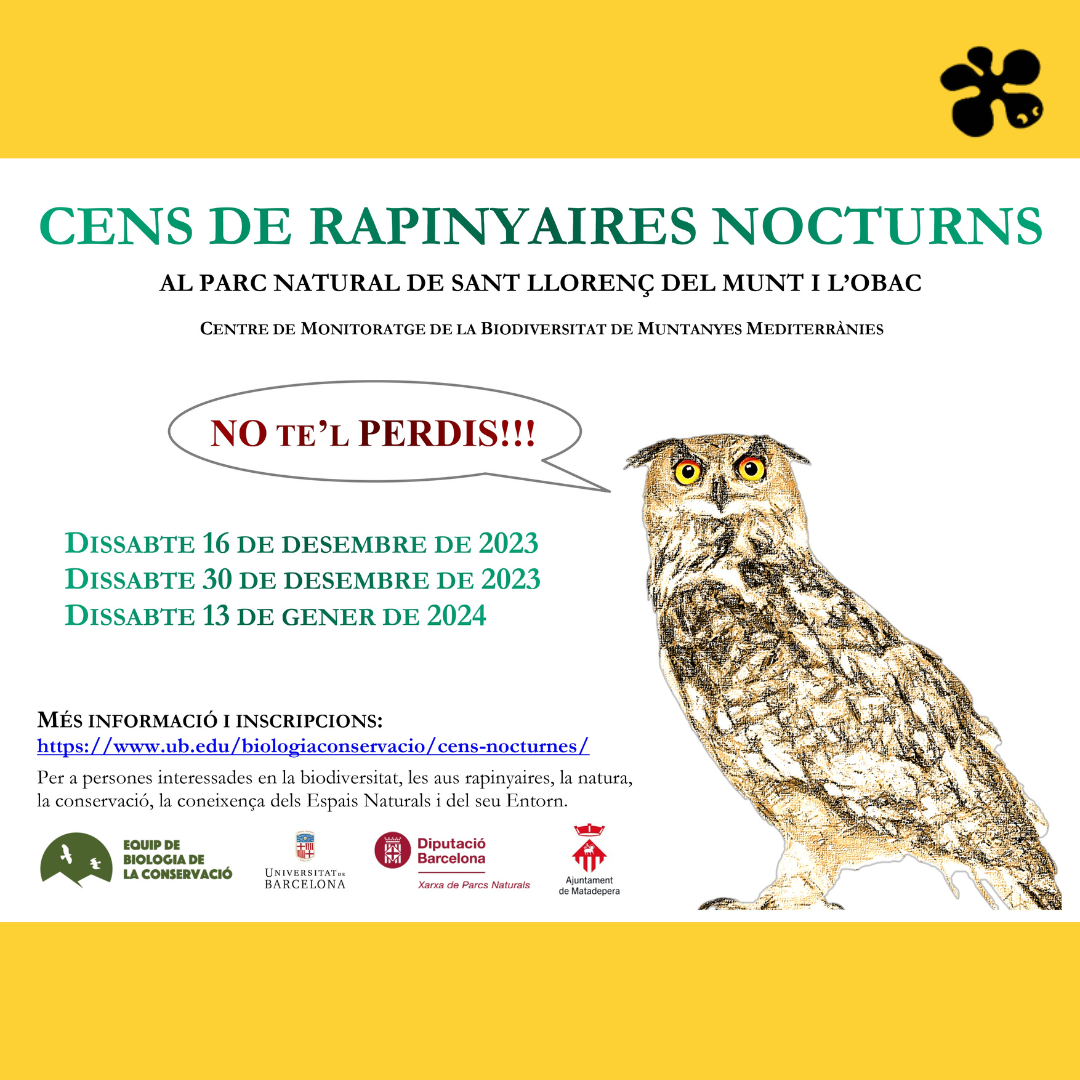14-11-2023
Identify nocturnal raptors when it gets dark
Getting to know natural spaces and their surroundings up close and protecting their biodiversity is one of the objectives of this new edition of the census of nocturnal raptors of the Sant Llorenç del Munt i l'Obac Natural Park, an initiative aimed at all audiences, from families to people interested in nature and environmental conservation. Groups of volunteers, guided by experts, will participate in carrying out a census in two areas of the park - the eastern area and the Obac mountain range - which will be monitored three times, from December to February. Registration to participate in the census is now open.
The activity is organized by the Pilot Center for Monitoring the Biodiversity of Mediterranean Mountains (CMBMM), an entity created in 2016 by the University of Barcelona and the Barcelona Provincial Council and directed by Joan Real, professor at the Faculty of Biology and the Research Institute. of Biodiversity of the UB (IRBio). The Association for the Defense and Study of Nature (ADENC) and the Catalan Institute of Ornithology (ICO) also collaborate.
The song of the tawny owl and the grand duke during mating
Raptors are species that are located at the end of the food webs of forest ecosystems and, therefore, are usually good indicators of the state and evolution of natural spaces. The census, which will be carried out with the collaboration of volunteers, will focus on the tawny owl (Strix aluco) and the grand duke (Bubo bubo) through the singing of the males during the mating season.
Considered a bioindicator of forest habitats – especially mature forests – the tawny owl is a difficult species to observe that breeds mainly in holes in cliffs and feeds on mice and other small mammals. In turn, the grand duke is the largest nocturnal bird of prey on the European continent and lives and breeds in rocky and calm areas. It is a sedentary and territorial species that usually feeds on rabbits, rats and birds, and is also a bioindicator of the good quality of the areas where it lives.
Once the raptor biodiversity census is completed, those responsible for the CMBMM will analyze the data provided by the observers and prepare a report that will be shared with all participants in the activity.
The Conservation Biology Team led by Professor Joan Real, from the Department of Evolutionary Biology, Ecology and Environmental Sciences, began the first raptor censuses in this natural park more than thirty years ago, a task that was key to identifying one of the densest tawny owl populations in all of Catalonia. According to the most recent data, the grand duke population is declining, while the tawny owl population remains stable.
The results of the monitoring of nocturnal raptors in 2022 will be presented on Tuesday, November 21, 2023 at 7:00 p.m. in the assembly hall of the Casal de Cultura de Matadepera, within the framework of the presentation of the objectives and lines of work of the CMBMM. A presentation of the 2023 nocturnal raptor monitoring will also be made to explain the methodology and organization of the census.
Source: UBPress
